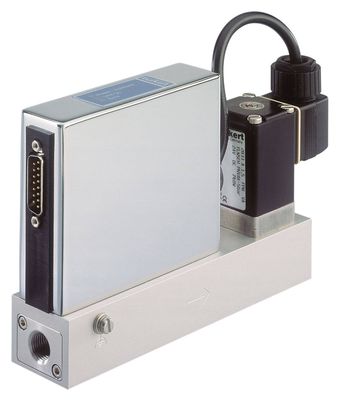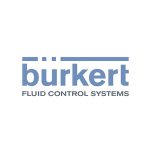Coatings for components
Modern coating technology has become common place in modern instrumentation. PIF spoke to Tony Brennan, Field Segment Manager Gas & Micro for Bürkert, to find out more about the various technologies used today and how they benefit modern industry.
From everyday, high-speed steel drill bits to gas turbine blades, modern surface coatings are being used to improve the performance of a wide range of components. There are several choices of application method and an almost unlimited number of coating materials. The key to achieving a successful combination is selecting an experienced specialist that can offer advice on the most suitable process and deliver it using high quality equipment.
Thermal spray coatings

The most wide-ranging group of processes is thermal spray coatings, which can be applied using several different processes:
Conventional flame spray: the wire or powder spray material is melted in a gaseous oxygen-fuel flame. The fuel gas can be acetylene, propane or hydrogen. The wire is fed into the flame, where it is melted and atomized by the addition of compressed air that also directs the melted material towards the workpiece surface.
Electric arc wire spray: an arc is formed by contact of two oppositely charged metallic wires, usually of the same composition, which leads to melting at the tip of the wire material. Air atomizes the melted spray material and accelerates onto the substrate. The rate of spray is adjusted by appropriate regulation of the wire feed as it is melted, so a constant arc can be maintained.
Plasma spray: A high frequency arc is ignited between an anode and a tungsten cathode. The gas flowing through between the electrodes, such as helium, hydrogen, nitrogen or mixtures of them, is ionized such that a plasma plume several centimetres in length develops. The temperature within the plume can reach as high as 16000° K. The spray material is injected as a powder outside of the gun nozzle into the plasma plume, where it is melted and hurled by the gas onto the substrate surface.
High velocity oxy-fuel spray (HVOF): This is a relatively recent addition to the family of thermal spray processes. It uses a supersonic jet, setting it apart from conventional flame spray, the speed of particle impact on the substrate is much higher, resulting in improved coating characteristics. The mechanism differs from flame spraying by an expansion of the jet at the exit of the gun. Fuel gases of propane, propylene, acetylene, hydrogen and natural gas can be used, as well as liquid fuels such as kerosene.
Chemical and Physical Vapour Deposition
In addition to the thermal spray coatings, other processes are available; the most suitable is usually dependent on the substrate temperature and the coating thickness:
The chemical and physical vapour deposition processes both operate in a similar manner but they are considerably more complex than the thermal spraying techniques. CVD uses precursors that are in a gaseous state, whereas in PVD the raw materials start the process in a solid state. In both cases the component is placed in a vacuum chamber where it is bombarded by high energy ions or electrons and heated to a high temperature.
There are a wide range of coatings that can be used, such as metal oxides, nitrides, carbides and similar materials, all of which are combined with a mixture of gases in the vacuum chamber. CVD processes are used for complex components that are difficult to coat with thermal spray methods to create very hard surface layers, but are conducted at temperatures in excess of 850 °C. These high temperatures limit the selection of possible substrates, because structural changes and partial deformations can take place during the cooling stage.
As experts in the field of fluid control, Bürkert offers a comprehensive range of individual products, such as solenoid valves, mass flow controllers, flow meters and temperature sensors that can be integrated into existing equipment. In addition, the highly skilled design engineers are able to create bespoke flow control systems that be integrated with new designs to deliver a comprehensive coatings solution.
Get the latest process industry news
Interested in receiving even more industry-leading news from Process Industry Forum delivered directly to your inbox? Then sign up to our free newsletter. Bringing you the latest news, trends, innovations and opinion from across the process industry, our exclusive newsletter gives you all the industry insights of the moment in one, easy-to-digest bulletin. Stay ahead of the competition with regular process industry news instalments from PIF.

